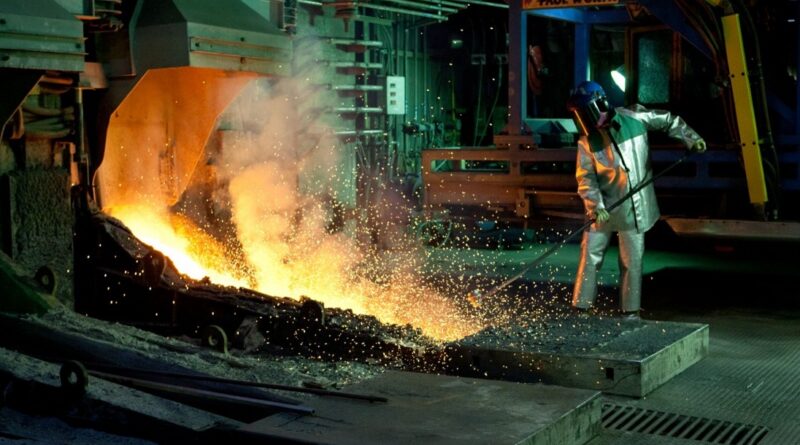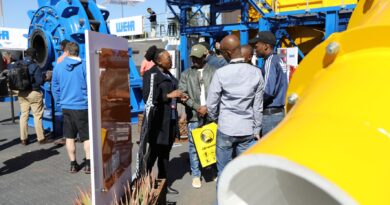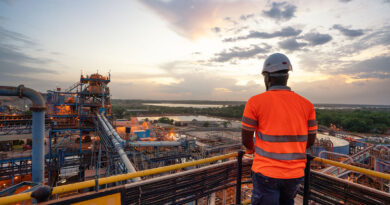Refined platinum production in 2022 fell 11% with SA falling 15%
Refined mine production in 2022 fell 11% (-717 koz) year-on-year to 5,579 koz. While the release of around 400 koz of semi-finished inventory, accumulated as a result of the 2020 Anglo Convertor Plant (ACP) shutdown, boosted output in 2021, production in 2022
faced significant headwinds, falling below 6,000 koz for only the third time in the past decade.
South Africa accounted for most of the decline falling 15% (-704 koz) to 3,975 koz, with several disruption events through the year resulting in production falling short of planned volumes. Output from North America also fell short of expectations due to a flood and reduced mine plan at Sibanye-Stillwater’s US operation, in addition to a strike at Glencore’s nickel operations in Canada.
Refined production from South Africa was expected to decline last year, although the extent of these losses exceeded expectations. Several factors accounted for this, with producers subject to individual disruption events, although common themes emerged of constrained supply chains, safety stoppages, community disruption and an unstable power supply.
Extended smelter maintenance was, however, responsible for by far the largest share of lost production. Accelerated wear at Implats’ Number 3 furnace necessitated an unplanned full rebuild, while the delivery of substandard materials required for Anglo American Platinum’s Polokwane smelter rebuild resulted in an extended shutdown.
Mine production continued unabated through smelter maintenance and thus constrained
processing capacity resulted in a short-term build-up of semi-processed inventory which can be caught-up.
The timing of the Polokwane rebuild towards the end of the year and the subsequent rebuild of Implats’ Number 4 furnace has meant significant volumes were not caught-up in 2022 contributing to the year-on-year drop in mine supply.
The Russian-Ukraine conflict and changing geopolitical dynamics introduced downside risk to Russian output. Nornickel, the country’s major PGM producer, experienced significant challenges in procurement and sales logistics.
The impact on production was however offset by the deferral of smelter maintenance which was originally planned for 2022, with the result that Russian production increased 2% (+11 koz) to 663 koz, in the process achieving planned volumes. Logistical constraints and the reorientation of sales to new markets impacted sales through 2022. It is expected that not all of Nornickel’s platinum production reached the market last year.
In Zimbabwe, despite underlying mine production increasing due to project development, refined output remained unchanged year-on-year due to the release of semi-processed inventory in 2021.
The completion of the Unki debottlenecking project and the commissioning of the Ngezi third concentrator at Zimplats increased capacity, which will result in higher refined volumes in 2023.
Against expectations of growth coming into 2022, North American output fell 5% (-13 koz) to 260 koz. The decline was driven by lower output from Sibanye-Stillwater’s US operations, the result of Mine Safety and Health Administration-mandated operational constraints in response to safety incidents.
A seven-week suspension of some mining areas, due to regional flooding, also created
significant disruption. As a result of these challenges and Sibanye-Stillwater gearing up for a weaker palladium market, a revised mine plan, significantly lowering output, was implemented.
More broadly, regional labour shortages and supply chain issues pressured operational stability. While a strike at Glencore’s nickel operations constrained growth, Canada’s output recovered from the 2021 strike at Vale’s Sudbury operations.
RECYCLING
Global recycling declined 17% year-on-year in 2022 to 1,682 koz. Automotive recycling in 2022 fell by 20% (-301 koz) to 1,242 koz. Despite improvements in new car availability, inventory levels were low and delivery lead times still long.
This is resulting in consumers driving their cars for longer. Cost-of-living concerns, as well as changes in driving behaviour, further limited the availability of end-of-life vehicles. Jewellery recycling fell by 12% year-on-year (-50 koz) due to a 22% decline in China linked to the weak demand for new platinum jewellery there. Recycling from electronic waste improved by 3% (+2 koz).
DEMAND
Platinum demand declined year-on-year to 6,451 koz (-9%) driven by net retail disinvestment and fewer plant capacity expansions compared to 2021. Automotive demand increased by 12% year-on-year (+311 koz) to 2,957 koz, while industrial demand declined
by 11% (-288 koz).
Weakness in the consumer electronics market in 2022 resulted in platinum demand in this segment falling by 21% year-on-year (-29 koz). With the largest jewellery market in lockdown for much of 2022, jewellery unsurprisingly declined by 3% (-59 koz). During 2022, we continued to see ETF liquidations (-560 koz), as well as a decline in warehouse stocks (-307 koz).
While bar and coin investment reached 225 koz this was 31% down on 2021, mostly reflecting net liquidations in Japan as the yen platinum price strengthened.




